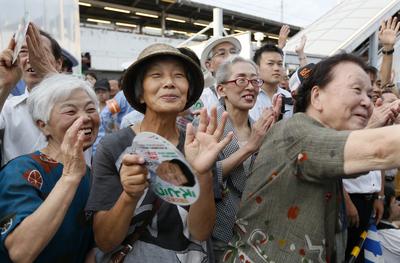National Institute of Population and Social Security research projects that the current population of 127 million will be 84 million in five decades’ time. The working-age population (15–64) will apparently fall by nearly half from today’s level of 80 million to 42 million. In short, 50 years from now, not only will the population have fallen dramatically but the labour-force population will have fallen even faster. The number of elderly people 65 and over will amount to 40 per cent of the population, causing substantial strain on Japan’s workers to sustain the non-working population.
For Japan, accumulating highly skilled foreign professionals has been more difficult than expected. This is made challenging because Japan has few features that can be considered appealing to foreigners as a migration destination, including a highly homogenous country with a language barrier that makes it difficult for migrants to have a rich social life.
In May 2012, looking to respond to its immigration shortfalls, Japan introduced the ‘points system for highly-skilled foreign professionals’, using Australia’s system as a role model. Points were calculated according to factors like age, previous work experience, academic qualifications, annual wage and passing the Japanese Language Proficiency Test. For people scoring above 70 points, immigration requirements were relaxed by softening conditions on receiving permanent residency and making it possible for immigrants to bring household help or parents with them.
The result was a failure, and the number of highly skilled foreign workers attracted by the policy amounted to merely one quarter of the planned 2000 per year. The Abe cabinet is trying to increase the number of highly skilled migrants by relaxing the conditions in the points system further, but at this stage it is impossible to judge whether this will have any meaningful effect.
This is not to say that it is impossible to increase migration, and one potential source of skilled migrants is those who already have a deep interest in Japan. The biggest barrier migrants face to integration into Japanese society is the Japanese language, and so it is important to make it easier for those already interested in Japan and its language to migrate to the country.
According to the Japan Foundation, in 2009 the number of people studying Japanese worldwide was 3.65 million and rising. These students are, for one reason or another, people with an interest in Japan. Some are interested in business while many young people are attracted to Japanese culture, including anime and those things that have come to be known as ‘Cool Japan’. The number of people around the world who take the Japanese Language Proficiency Test each year has also risen to 600,000. These are the people to whom the Japanese government should be completely opening its door.
If Japan does not halt its falling birth rate and at the same time drastically increase immigration, it will, unquestionably, come to walk the path of a nation in decline.
Can Japan successfully encourage capable people in foreign countries to immigrate to Japan? As well as this, can the Japanese people be encouraged to have more children? The answers remain unclear. Alas, policy innovation around these most-important and difficult of questions is not found within Abenomics, even if it has captured the attention of the Japanese people and the world.
Professor Iwao Nakatani is Chairman, Board of Councilors at Mitsubishi UFJ Research and Consulting Co and former Chairman of Sony.


Japan could (should) take in unskilled immigrants and train and have them study in Japan.
Perhaps the best way to do it is to have private companies take the lead. They could be given tax incentives or even subsidies.
Are they any plans or experiences with such schemes?
M
Another rich source of potential immigrants for Japan should be the large and growing number of children from so-called “international marriages” between Japanese and foreigners. Many of these children have Japanese language skills, an interest in the country inherited from their parent, and possibly a willingness to explore their roots in Japan. They bring with them a cross-cultural sensitivity that Japan continues to need and probably stand a better than average chance of succeeding as immigrants in Japan.
Singapore? Good luck with the Indian rioters.
One of the things I worry about is how I shall interpret the terms skilled and unskilled labor.
As someone with the profession of a chef and the ambition to move to Japan and work I wonder where I lie on that scale.
Or they can just accept that the way things are is the way things are and work with that. 125 million is far too many people for that small island country anyway.
Did you not read the article? Japan’s got a massive shrinking population crisis on its hands – that’s the whole point.